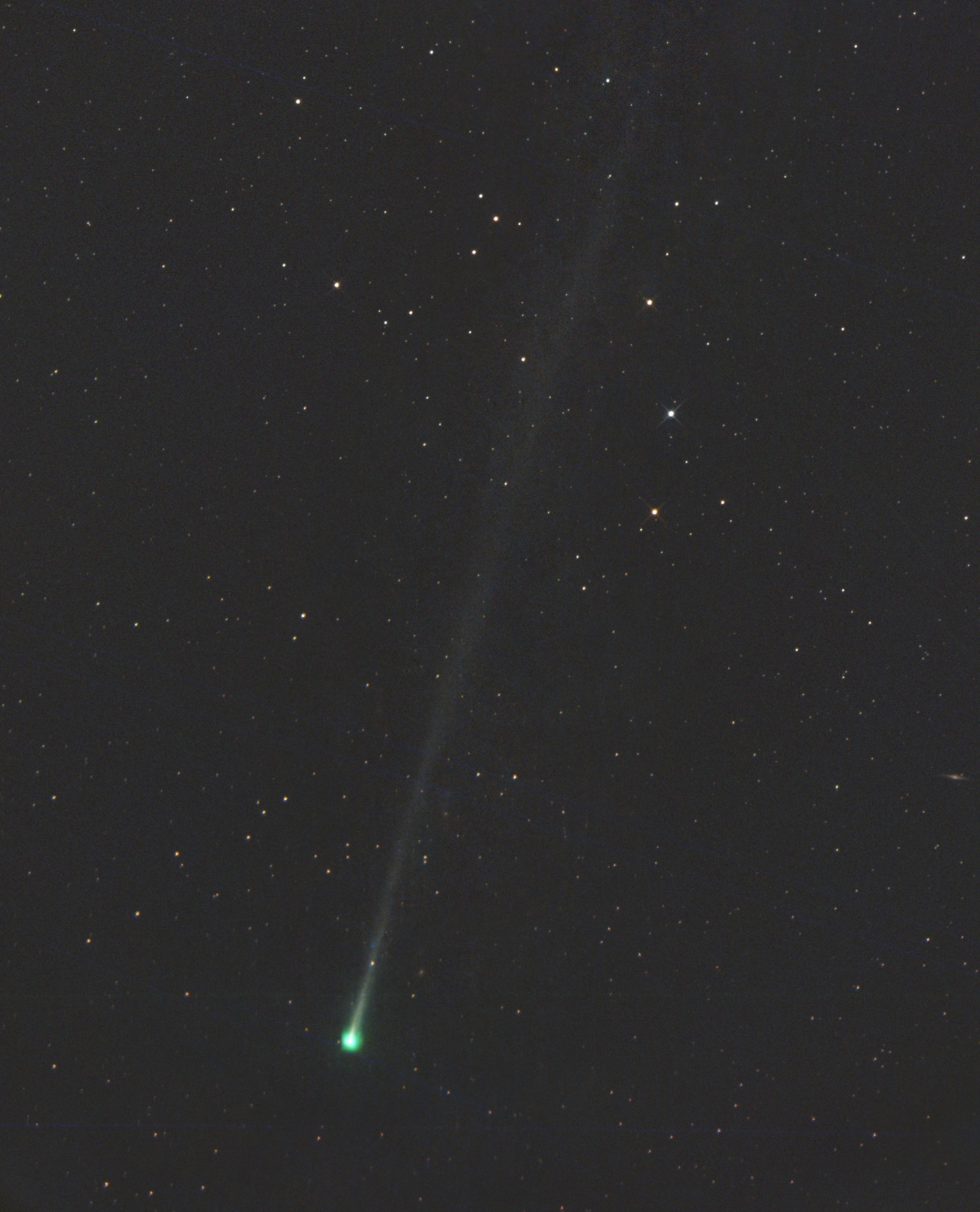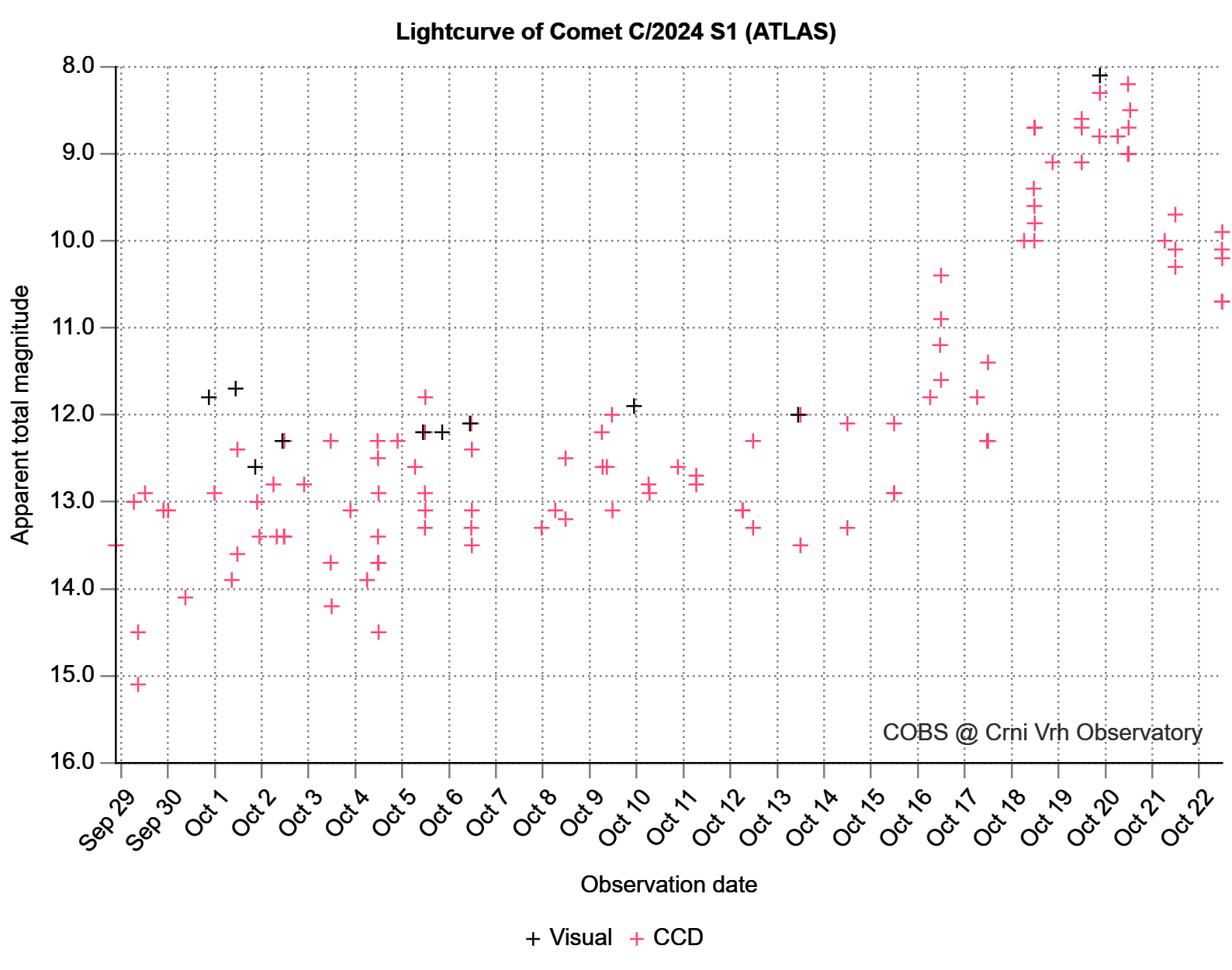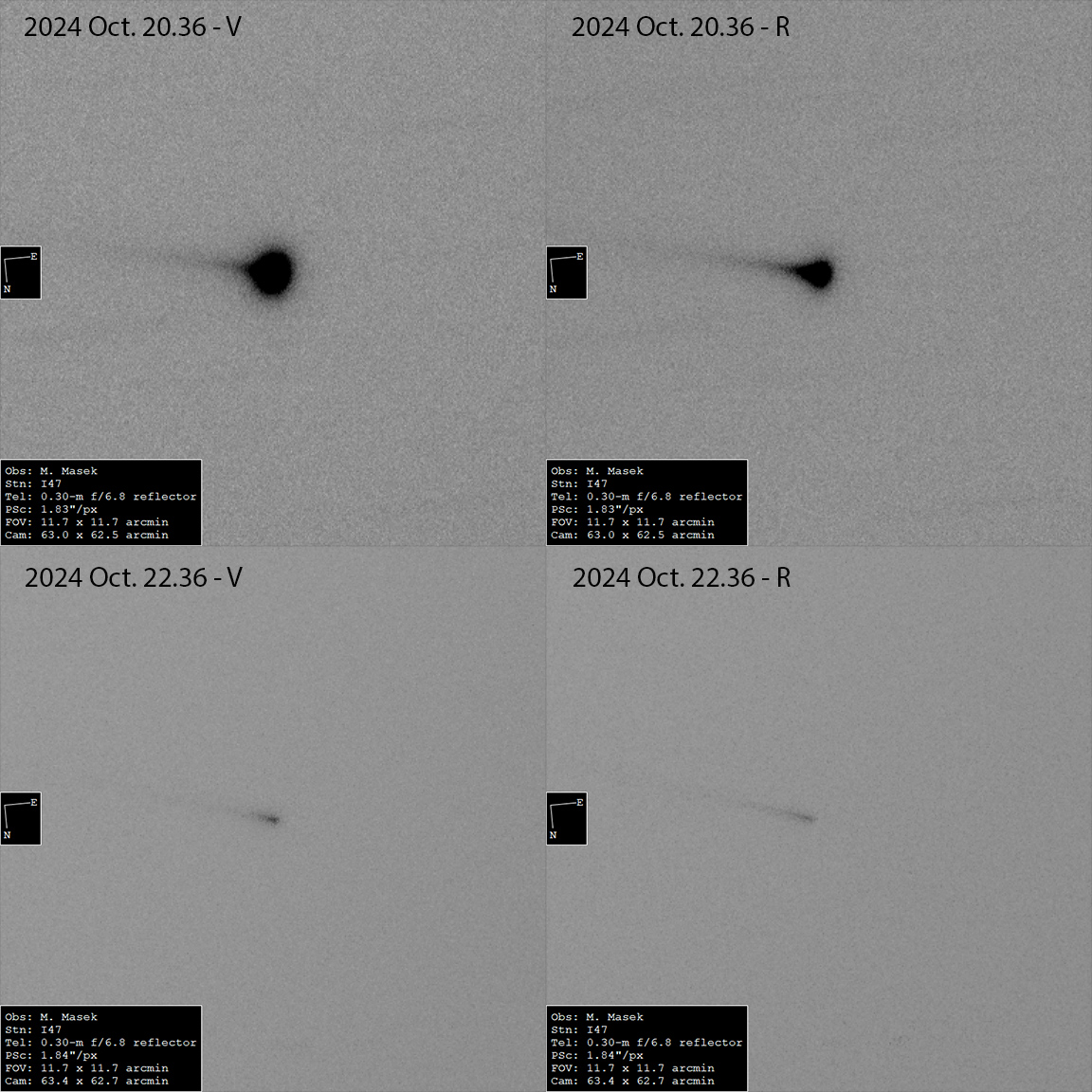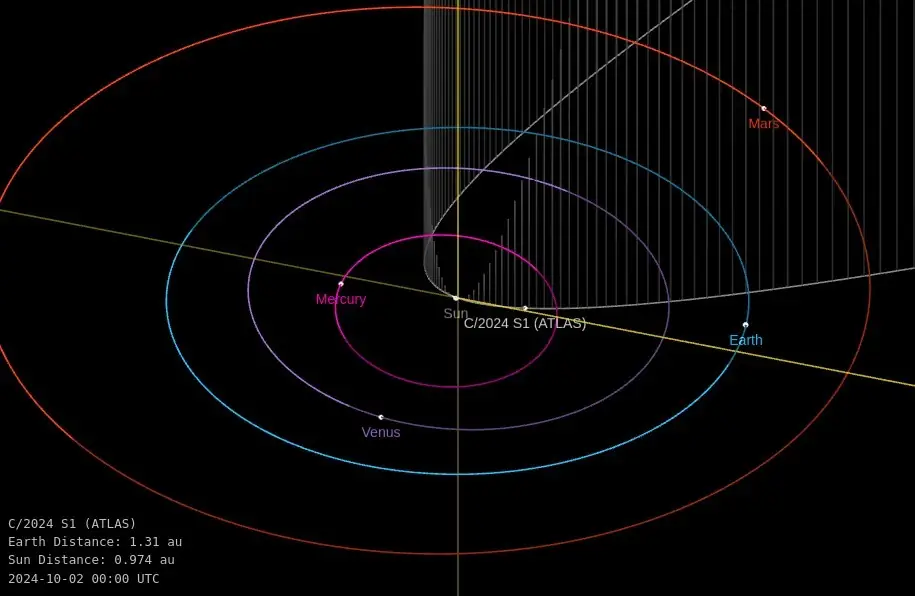Comet C/2024 S1 (ATLAS), previously believed to have perished, has reportedly risen from the dead. The tailed guest sparked back to life, rapidly increasing in brightness, and proved that reports of its demise have been greatly exaggerated. We take a closer look at what to expect from the comet, and whether we will be able to see it.

Schrödinger’s Comet
As we covered earlier this month, Comet C/2024 S1 (ATLAS) is a sungrazer discovered on September 27, 2024, about a month before its perihelion. The discovery attracted immediate attention of astronomy enthusiasts around the world, inspiring hope that we might witness two bright comets this October.

However, the comet displayed a confoundingly slow increase in brightness. In early October, C/2024 S1 (ATLAS) had a slight spike in luminosity. Only a few days later, an international astronomical society stunned the world with photos depicting the disintegration of the comet’s nucleus. Based on this evidence, many scientists concluded that the comet met its end. So they buried it, as it were. They had plenty of grounds to do so, as this is a pretty common scenario for comets. For instance, C/2012 S1 (ISON), lauded by media as the brightest comet of the 21st century, failed to meet its projections, transforming into a heap of dust upon its encounter with the Sun.

As for C/2024 S1 (ATLAS), it had another surprise in store. On October 15, further observations showed the comet had come out with its nucleus intact, despite previous evidence of disintegration. Furthermore, the object had two more bursts of brightness between October 16 and 19. As estimated by observers, the comet’s luminosity surged by a factor of 40, reaching 8.5 magnitude. All the while, the comet also spawned a tail. So it appears all reports of its death were somewhat premature.
Fragile Sungrazing Comets
As mentioned in previous coverage, C/2024 S1 (ATLAS) belongs to the Kreutz family — a class of sungrazing comets that travel along similar orbits. They’re believed to be fragments of the same giant comet that disintegrated in 4 BCE, hence its other name of Aristotle’s comet. A distinctive feature shared by the members of the Kreutz family is their incredible orbital proximity to the Sun during perihelion. Such closeness puts them in the path of extreme heat, which explains the high quantities of dust they eject, at least compared to regular comets. However, most Kreutz comets are fairly small and are usually only visible to the solar observatory SOHO.

Comet C/1965 S1 (Ikeya–Seki) also did not survive its encounter with the Sun, breaking apart into at least three pieces. Similarly, The Great Comet of 1882 disintegrated after reaching perihelion. Though in both cases, observers were still able to see the spectacle even after disintegration due to these comets’ sheer size.
Observers had another disappointment to contend with when comet C/2012 S1 (ISON) turned out to be a letdown of a century. Though also a sungrazer, it’s believed to be unrelated to the unconnected to the Kreutz family.
Discovered in 2012, the comet was projected to reach perihelion on October 1, 2013, at a distance of approximately 1.1 million kilometers (about 683,500 miles) from the Sun. It was expected to shine as brightly as C/1965 S1 (Ikeya–Seki), reaching a -13 magnitude. However, on approach to perihelion, it brightened in short bursts, indicating its nucleus was too fragile to withstand solar radiation. Its last spike in luminosity occurred close to perihelion and generated so much dust it remained visible long after the comet’s encounter with the sun.
The Future of C/2024 S1 (ATLAS)
There is very little chance that C/2024 S1 (ATLAS) will succeed where its predecessors failed and pass perihelion unscathed, considering its earlier signs of disintegration. More likely, this will be its final encounter with the Sun, after which the comet will join C/2012 S1 (ISON) in fate. Even its latest burst appeared to be rather damaging: it splintered off a large fragment, which exposed the comet’s nucleus. As a result, the comet lost the remainder of its gaseous contents, dimming drastically.

The main question now is whether C/2024 S1 (ATLAS) manages to survive long enough to reach perihelion. If it proves to be resilient, we will be able to witness its flight, though the best conditions for observation would be in the Southern Hemisphere. In the Northern Hemisphere, we might be able to glimpse its tail. C/2024 S1 (ATLAS) will reach perihelion on October 28, passing the Sun at only 500,000 kilometers (approximately 310,700 miles). At this distance, the comet’s icy nucleus will reach an incredible temperature of 2000 °C (3632°F), hotter than the iron melting point.
Should the comet remain relatively intact on approach, its brightness could theoretically reach -5 to -7 magnitude. This would make it shine brighter than Venus, albeit only briefly. But if by some miracle the comet survives its trial by fire, then it would be visible even in the Northern Hemisphere up until November 2.

Then again, the likelihood of this outcome is incredibly low. A more probable end for C/2024 S1 (ATLAS) is death upon meeting the Sun. And this time, it’s likely to be final. But don’t be discouraged. The event will be captured by multiple solar observatories, showing the comet’s disintegration in fine detail and collecting data that will prove useful in future astronomical research. And sooner or later, we will witness another Kreutz family visitor make its way to the Sun and vie for the title of the next great comet.


